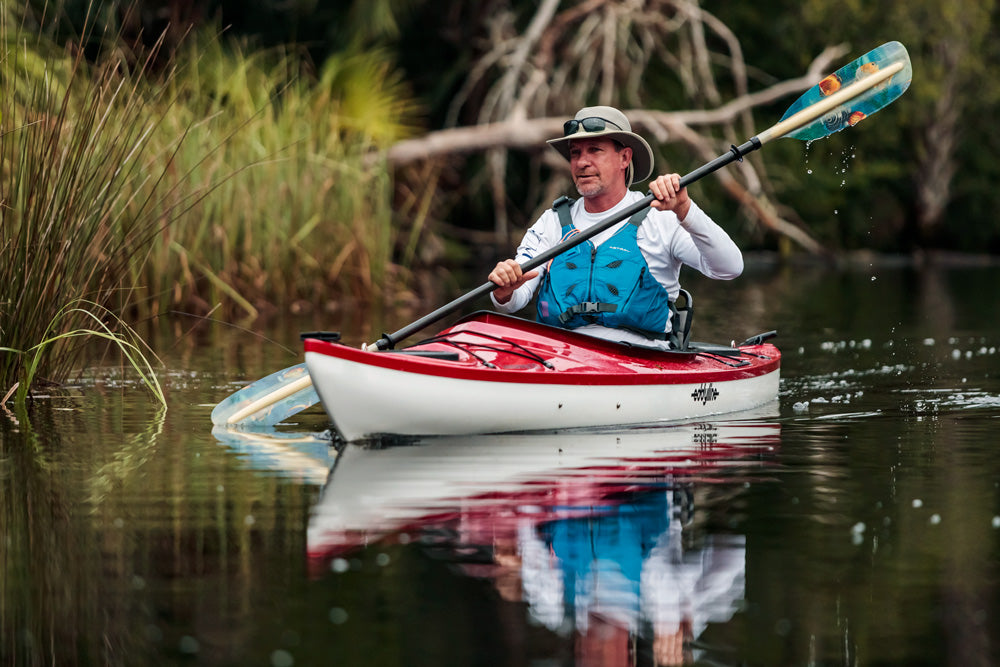Are you searching for a kayak that uses the mobility and simplicity of a lightweight version in addition to durability and efficiency for adventure? This extensive overview covers everything you need to learn about picking the very best light-weight kayak for your requirements.
Well go over the advantages of lightweight kayaks, what specifies agility, choosing the ideal one for you, building materials, vital attributes, safety, maintenance, and much more. Lets begin!
Table of Contents
Advantages of Lightweight Kayaks
Why go light-weight to begin with? Right here are a few of the greatest benefits:
Easier Transport and Storage
Lighter kayaks are much easier to move around. You can quickly bring them from your garage to your automobiles roofing system shelfs. Unloading or keeping them is much less literally exhausting also. This convenience makes it extra feasible to explore different waterways because your watercraft is mobile.by link thebrokebackpacker.com/best-lightweight-kayaks/ website
Better Control and Handling
Larger kayaks can be tough (at best) or virtually difficult (at worst) to navigate solo. But light-weight kayaks enable you to steer and navigate even more responsive crafts for solo paddling. This added dexterity also can be found in convenient when paddling through slim rooms or complicated terrain.
Raised Speed with Much Less Effort
Newtons First Legislation says that a lighter object calls for much less pressure to accelerate. So with much less boat to drive ahead, you can pick up speed more conveniently in a light-weight kayak. Much less energy exerted per paddle stroke allows you to go faster with high efficiency.
Recognizing What Defines a Lightweight Kayak
So what matters as a light-weight kayak? While personal preferences and strength levels differ, many leisure paddlers locate the top weight limitation to be around 45 to 55 extra pounds. This commonly consists of the full supply arrangement of a kayak with its seat, foot braces, and upper leg pads. Going over 55 pounds begins to obstruct most of the handling and transport benefits discussed above.
A kayaks weight depends largely on:
-
Products Utilized: Lighter yet strong products like carbon fiber and Kevlar composites allow lighter styles.
-
Design Functions: Facets such as hull form, air chambers in building, and small size can reduce weight.
- Production Techniques: Approaches like vacuum cleaner bagging eliminate excess resin, optimizing lightweight frameworks.
Variables to Consider When Choosing a Lightweight Kayak
With a concept of why it pays to go lightweight, here are the key elements to factor in while purchasing.
Kayak Product
The material made use of to construct the kayak impacts every little thing from sturdiness and life-span to weight and handling. It also influences price. Right here are some top alternatives:
Polyethylene (PE) – This thick, impact-resistant plastic makes up most entertainment kayaks. Rotomolded PE crafts offer good rigidness and shape retention at an economical cost point. Weight varies around 35 to 55 extra pounds for several one-person designs.
Thermoformed PE – A lighter, thinner polyethylene developed through warm and pressure. Kayaks vary between 25 to 45 pounds yet they give up some rigidity.
Composite Fiberglass – A fiberglass fabric embeded in epoxy resin. Composite kayaks made this way struck a light-weight yet stiff sweet spot, with prices rising appropriately. Weights a very mobile 25 to 40 extra pounds.
Compound Carbon Fiber – Exotic, light-weight, and ultra-rigid with carbon fiber fabric and epoxy material. However exotic comes at an unique deluxe rate factor, generally over $3,500. Weights are an unbelievable 12 to 30 extra pounds.
Inflatable Kayaks – Blow up kayaks utilize sturdy artificial materials like PVC/Hypalon, Nitrylon, or urethane product sandwiched between sturdy external and internal fabrics creates a stiff, paddleable craft when fully inflated. Folded up size is small yet inflated size, weight and taking care of strategies thick skins. Easy transport comes with the expense of performance.
Paddling Design
Consider what type of kayaking you intend to use your boat for. Intended use includes variables like water kinds, solo vs tandem, sit-in vs sit-on-top, and much more. Establishing whether youll usage it for leisure, angling, workout training, whitewater, or expedition touring guides ideal attributes.
Recreational Paddling – For flatwater paddling of lakes and gentle rivers, polyethylene kayaks work well. Fiberglass steps up speed while keeping security. Larger, much shorter kayaks give first ease for newbies.
Touring Kayaks – Want to get the pace to cover a higher range? Longer waterline touring kayaks constructed from fiberglass, carbon, or thermoformed PE help you cruise while packaging gear.
Whitewater Kayaking – Maneuverable, specialized whitewater kayaks take on rapids. Made difficult, they endure rock impacts with polyethylene or composite fiber. Anticipate a much heavier configuration as a tradeoff.
Fishing Kayaks – Set up for rods with adequate gear storage space, fishing kayaks go polythene for affordability and sturdiness. Lighter than some angling boats, yet ease adds pounds.
Inflatables – The ultimate light-weight when deflated and loaded, blow up crafts allure for portability but perform less rigidly when inflated and weighted down with paddler, gear, and water. Fantastic back-up boats.
Performance Priorities
The hulls contours greatly establish key efficiency. Flatter larger hulls provide preliminary security for newbies while narrower a lot more spherical profiles build rate by cutting through water extra efficiently. Additionally take into consideration rocker, size, and suggestions.
Storage and Transport Demands
If your vehicle cargo space is restricted, smaller kayaks in the 10 array might fit your facts better than 14 models likewise consider blow up or origami-style folding kayak alternatives that deflate or break down right into a small plan contrasted to hard shells.
Individual Fit and Comfort
Consider your elevation, upper body size, and overall body measurements when examination paddling kayaks for an excellent ergonomic fit. This includes crucial measurements of the seat, cabin opening, upper leg dental braces, and foot rests. Also tight or also loosened can promptly bring about discomfort that curtails even short paddling journeys.
Bring Ability
Light-weight kayaks permit you to go the distance with much less job, however overdoing it on filling with heavy equipment can swamp that benefit quickly. Validate the lots capability and storage alternatives suit just how much set you need to pack. And dont fail to remember to factor self-rescue flotation protection bags, PFDs, and water into the tons equation also.
Accessory Options
Todays lightweight kayaks bristle with accessory alternatives: paddle holders, tie-downs, electronics installs, rudders, stabilizers, sail packages, pedal drives for hands-free propulsion, and a lot more. But each add-on embellishes and weighs down your as soon as lean kayak, so choose carefully.
Equipment Storage Ability
Even smooth fast kayaks require room to stash a couple of tiny basics available. Convenience functions like integrated water resistant hatches, behind-seat bungees, and deck rigging give welcome adaptability.
Safety Attachments
While paddle leashes, helmets, and bilge pumps appear less vital for informal paddling, their value spikes for remote exploration touring. Spray skirts help seal out water in rougher problems as well.
Production Methods and Quality Craftsmanship
Just how meticulously a kayak obtains produced not just impacts longevity yet also the general weight. Aspects like material transfer molding, thermoforming, vacuum cleaner bagging, and exact computer-controlled trimming influence the last quality. Brand name reputation works as your finest overview.
Budget Plan Fact Examine
Similar to the majority of gear, more affordable kayaks exist however usually compromise something in lower-grade materials, building methods, or quality control. Discover the cost sweet spot balancing high quality and price for your purposes. Carbon fiber boats set you back exponentially greater than polyethylene without supplying efficiency leaps to warrant that for some.
Safety And Security and Proper Upkeep
Regardless of what sort of light-weight kayak you pick, prioritizing safety and security fundamentals from putting on a PFD to discovering proper paddling strategies is crucial. Additionally, regular upkeep via cleaning after journeys, examinations for damage, and appropriate off-season storage space will protect your investment for periods to find.
The Very Best Light Kayak for You
Picking the best light-weight kayak means stabilizing your top priorities for performance, attributes, material qualities, and cost. Take into consideration when and how you expect to utilize your kayak most – fast cardio workouts, twisting marshland trips, or weekend break journey journeys packing great deals of gear.
Selecting the lightest kayak isnt constantly necessarily the ideal option if it makes various other tradeoffs in hull rigidity, freight ability, or resilience. But for the little additional effort lightweight kayaks compensate you with added dexterity, rate, and simpleness contrasted to heavier alternatives, youll find more factors to get out paddling more frequently.

